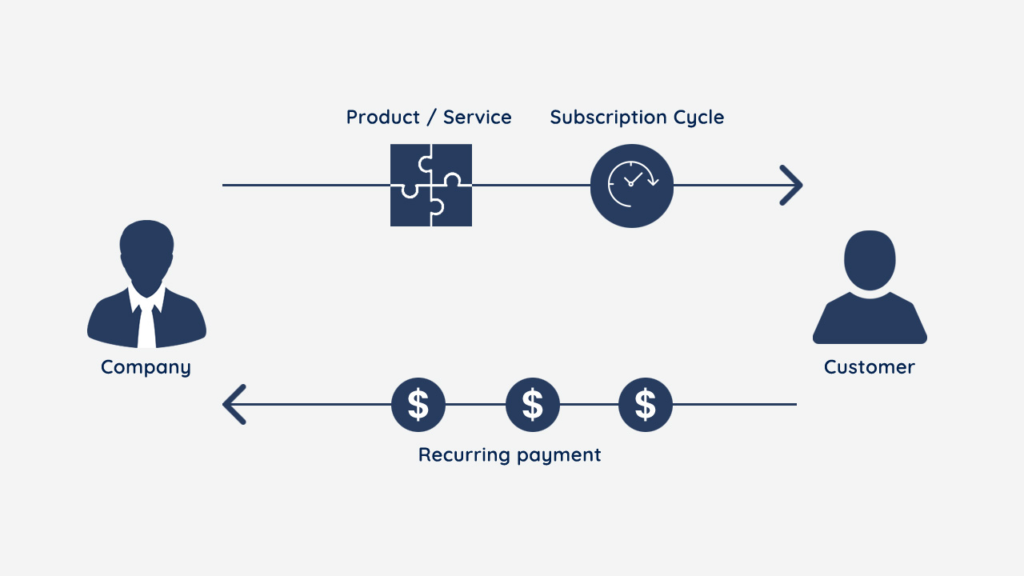
E-commerce Subscription Models Recurring Revenue
In the realm of E-commerce, the subscription model has become an integral component, allowing businesses to tap into the treasure trove of recurring revenue. In this exploration, we delve into the intricacies of E-commerce Subscription Models and their remarkable potential to transform businesses. Let's embark on this journey of discovery.
Understanding E-commerce Subscription Models
E-commerce Subscription Models represent a paradigm shift in the way businesses generate revenue. Unlike traditional retail, where customers make one-time purchases, these models offer a recurring payment system. Customers subscribe to receive products or services regularly, creating a steady income stream for businesses.
How E-commerce Subscription Models Work
E-commerce Subscription Models function with a straightforward mechanism. Customers sign up for a subscription, choosing the products or services they want and the frequency of delivery. The recurring billing cycle ensures a predictable revenue stream for the business. This model is employed across various industries, from cosmetics to meal kit delivery.
Advantages of E-commerce Subscription Models
The benefits of E-commerce Subscription Models are manifold. They offer stability, customer loyalty, and the potential for upselling. Businesses can anticipate revenue, build a dedicated customer base, and explore cross-selling opportunities.
The Power of Recurring Revenue
Recurring revenue is the backbone of E-commerce Subscription Models, and its significance cannot be overstated.
Predictable Income
Recurring revenue provides businesses with a steady and predictable income stream. This financial stability allows for better planning, investment, and growth.
Customer Retention
E-commerce Subscription Models foster customer loyalty. Customers who subscribe are more likely to stay engaged with the brand, reducing churn rates.
Scaling Opportunities
With a solid base of recurring revenue, businesses can explore expansion and scaling. They can confidently invest in marketing, product development, and customer acquisition.
Key Strategies for Implementing E-commerce Subscription Models
For businesses looking to venture into E-commerce Subscription Models, there are key strategies to consider.
1. Diverse Product Offerings
Offer a range of products or services to cater to different customer needs and preferences.
2. Pricing Structure
Design a pricing structure that appeals to customers while ensuring profitability.
3. Personalization
Personalize subscriptions based on customer behavior and preferences to enhance their experience.
Frequently Asked Questions
-
What industries benefit the most from E-commerce Subscription Models?
E-commerce Subscription Models can be applied to various industries, including beauty, health, food, and entertainment.
-
How do I calculate the potential recurring revenue for my business?
To estimate recurring revenue, consider your subscription price, churn rate, and customer acquisition cost.
-
What is the role of data analytics in E-commerce Subscription Models?
Data analytics helps businesses understand customer behavior, track subscription metrics, and optimize offerings.
-
Are there any risks associated with E-commerce Subscription Models?
Risks include customer churn, regulatory changes, and competition. However, with the right strategies, these risks can be mitigated.
-
How do you ensure a seamless customer experience with E-commerce Subscription Models?
Provide excellent customer support, streamline the subscription management process, and continuously gather feedback for improvements.
-
What trends are shaping the future of E-commerce Subscription Models?
Emerging trends include AI-driven personalization, sustainability, and global expansion.
In the vast landscape of E-commerce, Subscription Models shine as beacons of revenue stability and customer loyalty. Their transformative power is undeniable, making them a valuable addition to any business strategy. By understanding the intricacies of E-commerce Subscription Models and their ability to generate recurring revenue, businesses can pave the way for sustained growth and success.
Summary: E-commerce Subscription Models represent a revolutionary approach to revenue generation in the digital age. They offer stability, customer loyalty, and scaling opportunities. By implementing the right strategies and understanding the nuances of this model, businesses can unlock the potential of recurring revenue.
